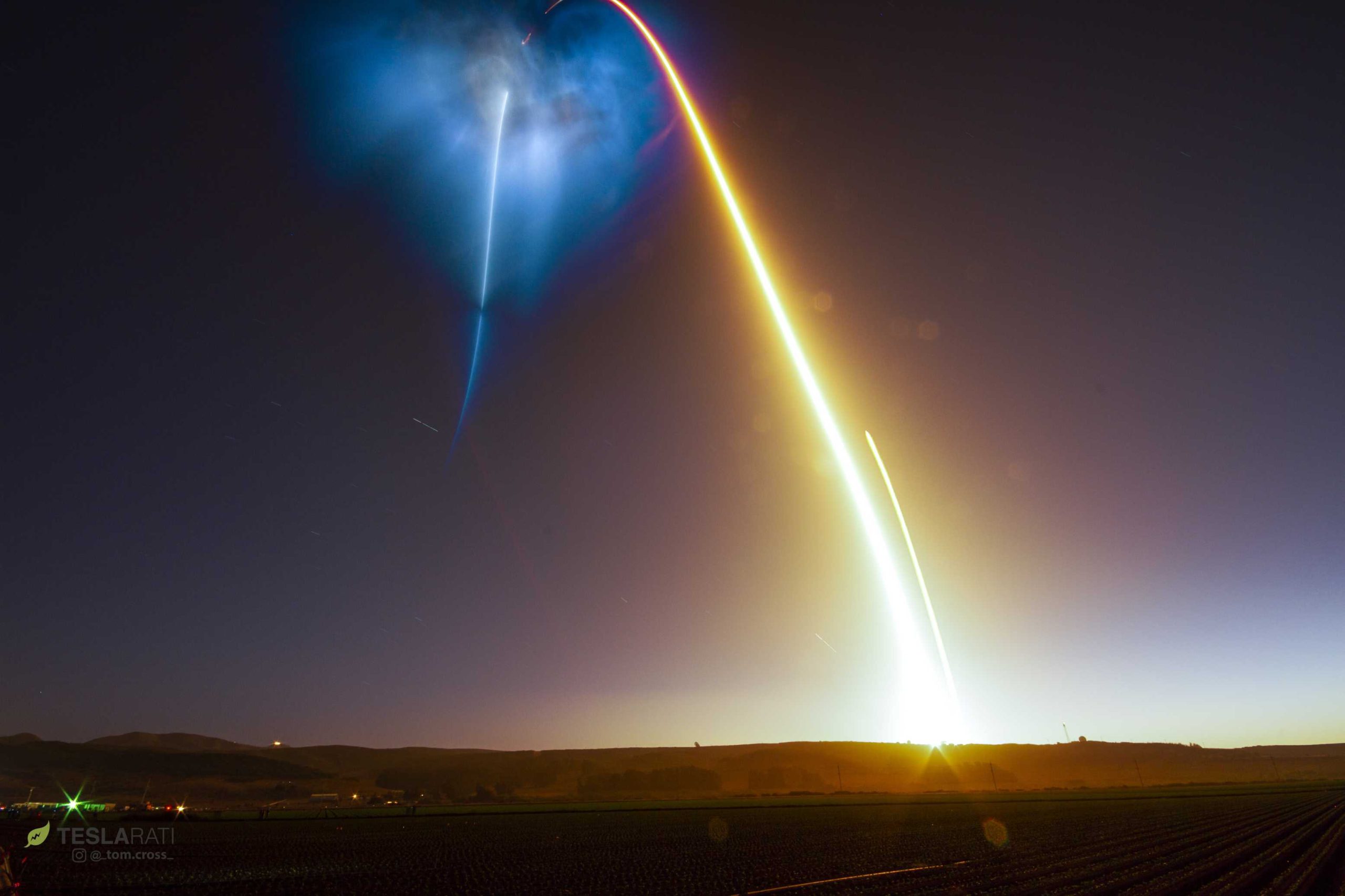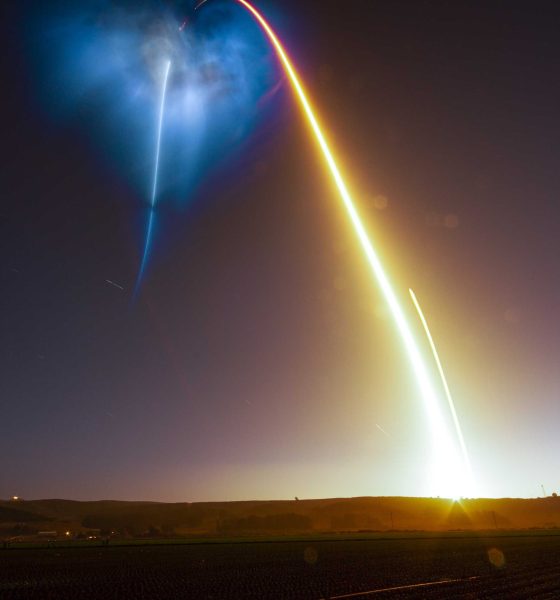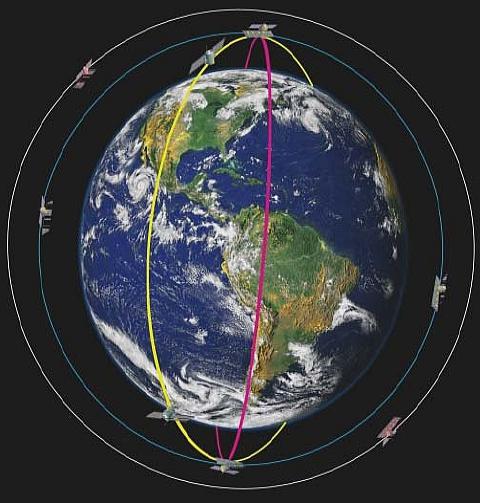

News
SpaceX’s first West Coast Falcon 9 launch in eight months now set for early 2020
After what is set to be a more than 8-month lull, SpaceX’s California launch facilities are scheduled to support a Falcon 9 launch no earlier than February 2020.
Speaking at 2019’s World Satellite Business Week, Raúl Kulichevsky – a director at the Comisión Nacional de Actividades Espaciales (CONAE), Argentina’s national space agency – confirmed that the country’s SAOCOM-1B Earth observation satellite making great progress towards that launch target.
The launch was recently pushed into January and later March of 2020 after minor satellite production delays ended plans for a late-2019 launch. On a recent positive note, Deputy Executive and Technical Director of CONAE Raúl Kulichevsky indicated that SAOCOM-1B’s Falcon 9 launch was now planned a month or so earlier than previously expected and is on track for a February 2020 liftoff from Vandenberg Air Force Base (VAFB).
This small but positive schedule bump comes just a week or so after CONAE engineers and technicians wrapped up a major SAOCOM-1B integration milestone, successfully attaching the satellite’s main imaging instrument – a large phased-array radar – to its bus (the primary structure). This work is ongoing in Bariloche, Argentina, a spectacular town surrounded by the Andes mountain range and glacier-fed lakes. Aside from the electrical and mechanical integration of SAOCOM-1B’s radar and bus, the CONAE team completed the installation of thermal insulator blankets. Up next will be the attachment of two solar arrays and associated deployment tests, followed by integrated center-of-gravity measurements and vibrational/acoustic load tests.
Assuming a successful launch early next year, SAOCOM-1B will join its SAOCOM-1A sister satellite in a sun-synchronous orbit (SSO), completing the L-band Satélite Argentino de Observación Con Microondas Synthetic Aperture Radar (SAR) constellation. In an agreement called Sistema Italo Argentino de Satélites para la Gestión de Emergencias (SIASGE), the completed SAOCOM constellation will work in conjunction with Italy’s four-satellite COSMO-SkyMed constellation to provide accurate and persistent Earth observations and support disaster monitoring efforts around the world.
CONAE hopes to eventually expand its SAOCOM constellation with the future development and deployment of two SAOCOM-2 spacecraft.

The SAOCOM-1A satellite was launched in a spectacular fashion in October 2018, producing a nebula-like cloud of sun-lit Falcon 9 exhaust that was visible for hundreds of miles. The SAOCOM-1A marked the second launch of Falcon 9 booster B1048 and also featured SpaceX’s first successful West Coast Return-to-Launch-Site (RTLS) landing.
Highly Commended for Skyscapes is Brandon Yoshizawa’s ‘Flower Power’ #astrophoto2019 pic.twitter.com/L5EVGwEfDr— Royal Museums Greenwich (@RMGreenwich) September 12, 2019
Falcon 9’s SAOCOM-1B mission will come long after SpaceX’s most recent West Coast launch – the June 2019 launch of the Canadian Space Agency’s (CSA) RADARSAT Constellation Mission (RCM). West coast observers and launch teams are sure to welcome the launch of the SAOCOM-1B mission after what is set to be more than eight months spent without a launch.
Check out Teslarati’s newsletters for prompt updates, on-the-ground perspectives, and unique glimpses of SpaceX’s rocket launch and recovery processes.

Investor's Corner
Tesla stock closes at all-time high on heels of Robotaxi progress

Tesla stock (NASDAQ: TSLA) closed at an all-time high on Tuesday, jumping over 3 percent during the day and finishing at $489.88.
The price beats the previous record close, which was $479.86.
Shares have had a crazy year, dipping more than 40 percent from the start of the year. The stock then started to recover once again around late April, when its price started to climb back up from the low $200 level.
This week, Tesla started to climb toward its highest levels ever, as it was revealed on Sunday that the company was testing driverless Robotaxis in Austin. The spike in value pushed the company’s valuation to $1.63 trillion.
Tesla Robotaxi goes driverless as Musk confirms Safety Monitor removal testing
It is the seventh-most valuable company on the market currently, trailing Nvidia, Apple, Alphabet (Google), Microsoft, Amazon, and Meta.
Shares closed up $14.57 today, up over 3 percent.
The stock has gone through a lot this year, as previously mentioned. Shares tumbled in Q1 due to CEO Elon Musk’s involvement with the Department of Government Efficiency (DOGE), which pulled his attention away from his companies and left a major overhang on their valuations.
However, things started to rebound halfway through the year, and as the government started to phase out the $7,500 tax credit, demand spiked as consumers tried to take advantage of it.
Q3 deliveries were the highest in company history, and Tesla responded to the loss of the tax credit with the launch of the Model 3 and Model Y Standard.
Additionally, analysts have announced high expectations this week for the company on Wall Street as Robotaxi continues to be the focus. With autonomy within Tesla’s sights, things are moving in the direction of Robotaxi being a major catalyst for growth on the Street in the coming year.
Elon Musk
Tesla needs to come through on this one Robotaxi metric, analyst says
“We think the key focus from here will be how fast Tesla can scale driverless operations (including if Tesla’s approach to software/hardware allows it to scale significantly faster than competitors, as the company has argued), and on profitability.”

Tesla needs to come through on this one Robotaxi metric, Mark Delaney of Goldman Sachs says.
Tesla is in the process of rolling out its Robotaxi platform to areas outside of Austin and the California Bay Area. It has plans to launch in five additional cities, including Houston, Dallas, Miami, Las Vegas, and Phoenix.
However, the company’s expansion is not what the focus needs to be, according to Delaney. It’s the speed of deployment.
The analyst said:
“We think the key focus from here will be how fast Tesla can scale driverless operations (including if Tesla’s approach to software/hardware allows it to scale significantly faster than competitors, as the company has argued), and on profitability.”
Profitability will come as the Robotaxi fleet expands. Making that money will be dependent on when Tesla can initiate rides in more areas, giving more customers access to the program.
There are some additional things that the company needs to make happen ahead of the major Robotaxi expansion, one of those things is launching driverless rides in Austin, the first city in which it launched the program.
This week, Tesla started testing driverless Robotaxi rides in Austin, as two different Model Y units were spotted with no occupants, a huge step in the company’s plans for the ride-sharing platform.
Tesla Robotaxi goes driverless as Musk confirms Safety Monitor removal testing
CEO Elon Musk has been hoping to remove Safety Monitors from Robotaxis in Austin for several months, first mentioning the plan to have them out by the end of 2025 in September. He confirmed on Sunday that Tesla had officially removed vehicle occupants and started testing truly unsupervised rides.
Although Safety Monitors in Austin have been sitting in the passenger’s seat, they have still had the ability to override things in case of an emergency. After all, the ultimate goal was safety and avoiding any accidents or injuries.
Goldman Sachs reiterated its ‘Neutral’ rating and its $400 price target. Delaney said, “Tesla is making progress with its autonomous technology,” and recent developments make it evident that this is true.
Investor's Corner
Tesla gets bold Robotaxi prediction from Wall Street firm
Last week, Andrew Percoco took over Tesla analysis for Morgan Stanley from Adam Jonas, who covered the stock for years. Percoco seems to be less optimistic and bullish on Tesla shares, while still being fair and balanced in his analysis.

Tesla (NASDAQ: TSLA) received a bold Robotaxi prediction from Morgan Stanley, which anticipates a dramatic increase in the size of the company’s autonomous ride-hailing suite in the coming years.
Last week, Andrew Percoco took over Tesla analysis for Morgan Stanley from Adam Jonas, who covered the stock for years. Percoco seems to be less optimistic and bullish on Tesla shares, while still being fair and balanced in his analysis.
Percoco dug into the Robotaxi fleet and its expansion in the coming years in his latest note, released on Tuesday. The firm expects Tesla to increase the Robotaxi fleet size to 1,000 vehicles in 2026. However, that’s small-scale compared to what they expect from Tesla in a decade.
Tesla expands Robotaxi app access once again, this time on a global scale
By 2035, Morgan Stanley believes there will be one million Robotaxis on the road across multiple cities, a major jump and a considerable fleet size. We assume this means the fleet of vehicles Tesla will operate internally, and not including passenger-owned vehicles that could be added through software updates.
He also listed three specific catalysts that investors should pay attention to, as these will represent the company being on track to achieve its Robotaxi dreams:
- Opening Robotaxi to the public without a Safety Monitor. Timing is unclear, but it appears that Tesla is getting closer by the day.
- Improvement in safety metrics without the Safety Monitor. Tesla’s ability to improve its safety metrics as it scales miles driven without the Safety Monitor is imperative as it looks to scale in new states and cities in 2026.
- Cybercab start of production, targeted for April 2026. Tesla’s Cybercab is a purpose-built vehicle (no steering wheel or pedals, only two seats) that is expected to be produced through its state-of-the-art unboxed manufacturing process, offering further cost reductions and thus accelerating adoption over time.
Robotaxi stands to be one of Tesla’s most significant revenue contributors, especially as the company plans to continue expanding its ride-hailing service across the world in the coming years.
Its current deployment strategy is controlled and conservative to avoid any drastic and potentially program-ruining incidents.
So far, the program, which is active in Austin and the California Bay Area, has been widely successful.








